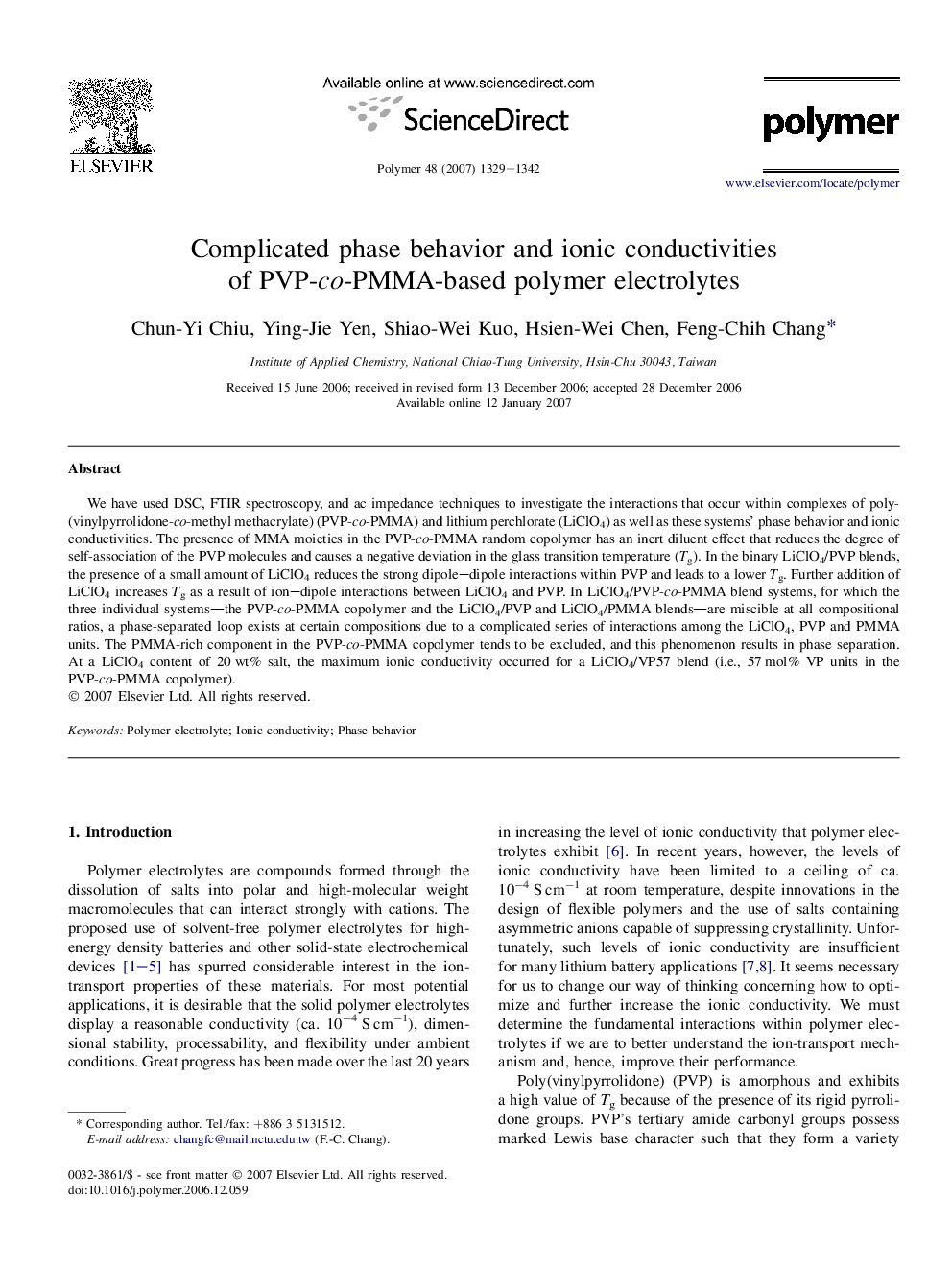| Article ID | Journal | Published Year | Pages | File Type |
|---|---|---|---|---|
| 5186131 | Polymer | 2007 | 14 Pages |
We have used DSC, FTIR spectroscopy, and ac impedance techniques to investigate the interactions that occur within complexes of poly(vinylpyrrolidone-co-methyl methacrylate) (PVP-co-PMMA) and lithium perchlorate (LiClO4) as well as these systems' phase behavior and ionic conductivities. The presence of MMA moieties in the PVP-co-PMMA random copolymer has an inert diluent effect that reduces the degree of self-association of the PVP molecules and causes a negative deviation in the glass transition temperature (Tg). In the binary LiClO4/PVP blends, the presence of a small amount of LiClO4 reduces the strong dipole-dipole interactions within PVP and leads to a lower Tg. Further addition of LiClO4 increases Tg as a result of ion-dipole interactions between LiClO4 and PVP. In LiClO4/PVP-co-PMMA blend systems, for which the three individual systems-the PVP-co-PMMA copolymer and the LiClO4/PVP and LiClO4/PMMA blends-are miscible at all compositional ratios, a phase-separated loop exists at certain compositions due to a complicated series of interactions among the LiClO4, PVP and PMMA units. The PMMA-rich component in the PVP-co-PMMA copolymer tends to be excluded, and this phenomenon results in phase separation. At a LiClO4 content of 20Â wt% salt, the maximum ionic conductivity occurred for a LiClO4/VP57 blend (i.e., 57Â mol% VP units in the PVP-co-PMMA copolymer).
